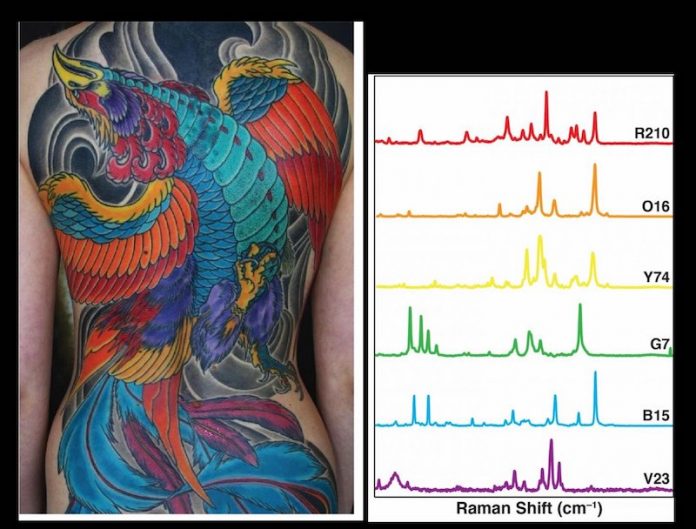
In a new study, researchers found the humble ink in a tattoo artist’s needle could be the key to improving the detection of cancer.
They recently developed new imaging contrast agents using common dyes such as tattoo ink and food dyes.
When these dyes are attached to nanoparticles, they can illuminate cancers, allowing medical professionals to better differentiate between cancer cells and normal adjacent cells.
The research was conducted by a team from the USC Viterbi Department of Biomedical Engineering.
Early detection is crucial for patients to have the best possible outcomes from cancer; a disease that will affect over 38% of Americans at some point in their lifetime.
However, detection is challenging without good imaging agents; contrast materials which when injected into patients, allow for imaging such as MRI and CT to function with better sensitivity and specificity, enabling medical professionals to diagnose with accuracy, and for surgeons to identify the exact margins of tumors.
Illuminated nanoparticles move through a blood vessel to find cancer.
The coloring dyes were incorporated into nanoparticles to allow for more sensitive imaging contrast when identifying cancerous cells.
To achieve this, the team found a unique source of optical contrasting agents from the household coloring dyes and pigments that we routinely encounter.
These “optical inks” can be attached to cancer-targeting nanoparticles to improve cancer detection and localization.
The dyes and pigments were discovered from common coloring agents that already have U.S. Food and Drug Administration (FDA) approval, which the team hopes may enable them to be more easily and safely implemented in imaging practice.
One of the safety challenges of imaging using nanoparticles, is that often these nanoparticles can have prolonged retention in organs like the liver and the spleen, which are responsible for trying to break down the nanoparticle.
Because of these safety concerns, it’s crucial to consider biodegradable nanomaterials. Currently, there are a limited amount of optical contrast agents approved for clinical use.
With this in mind, the team considered common food dyes that could be used to decorate the nanoparticles, such as the dyes found in colorful candies like Skittles and M&Ms.
These brightly colored food products that humans routinely consume have been deemed by the FDA as safe for human consumption.
The team has developed a nanoparticle that will carry these highly pigmented imaging agents as a “payload.”
The particles are of a specific size that enables them to passively penetrate into tumor areas, but can also be retained due to their size.
Most of the imaging contrast agents used in the clinic today are small molecule dyes.
The nanoparticle can also be “decorated” with a larger payload of the dye than previous small molecule imaging agents, which the team has shown under fluorescence imaging leads to a brighter signal and significant localization of the nanoparticles in tumors.
One author of the study is Cristina Zavaleta.
The study is published in Biomaterials Science.
Copyright © 2020 Knowridge Science Report. All rights reserved.



